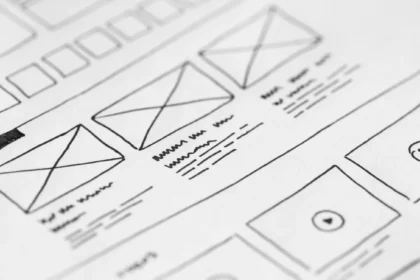Creating exceptional user experiences isn’t just a goal, it’s a necessity. How can we go about doing this? Incorporate data-driven design into your methodology. By gathering insights on user behaviour through testing and feedback, designers can create intuitive, user-friendly interfaces that solve user problems and help to eliminate subjectivity. Here’s how data-driven design can transform the way users interact with digital products and services.
Understanding user needs
Data-driven design helps us to uncover what users truly need. Tools like analytics platforms, heat maps, and user surveys provide invaluable insights into user behaviour. These data points reveal patterns: where users linger, what frustrates them, and what drives them to complete tasks. Armed with this knowledge, designers can shift from assumptions to evidence-based solutions.
For example, imagine a travel booking website where analytics reveal that users frequently abandon their bookings at the payment page. With this insight, designers can investigate further, streamline the payment process and reduce friction. The result? A seamless experience that meets users needs.
Personalisation
Personalisation is one of the best ways to improve your user experience, and it’s only possible with data. By analysing user preferences, browsing history, and demographics, designers can tailor experiences to individual needs. Whether it’s recommending products based on previous purchases or curating content that aligns with a user’s interests, personalisation makes users feel valued and helps to create a relatable experience.
Take Spotify for instance. The platform’s data-driven approach curates personalised playlists like “Discover Weekly,” serving users with music recommendations they didn’t even know they wanted. This not only enhances user satisfaction but also drives deeper engagement.

Improving usability through iteration
Data-driven design thrives on iteration. Usability testing and A/B testing help designers identify which elements resonate with users and which fall flat. For example, testing two different layouts for a sign-up form can reveal which one leads to higher conversions. Iterating based on this data ensures the final design is intuitive and user-friendly.
Reducing cognitive load
A well-designed interface minimises cognitive load – the mental effort required to navigate a website or app. Behavioural data plays a vital role in achieving this. For instance, tracking user flows can identify where users struggle with multi-step processes, like completing a checkout journey. Designers can then streamline these processes, reducing unnecessary steps and making interactions smoother.
Quick problem-solving
With quick access to real-time data, identifying and addressing user issues at pace becomes possible. Tools that track errors or collect direct user feedback allow designers to fix problems before they become bigger issues. For example, if a heat map shows users clicking on a non-interactive element, it’s a sign that expectations aren’t being met. Likewise data on a page’s scroll reach can help us identify where user attention is focused and therefore where to place key elements. Designers can then adjust the experience to align with user expectation, reducing frustration and streamlining journeys.
Measuring success and driving continuous improvement
One of the most important aspects of data-driven design is measuring success. Metrics like conversion rates and bounce rates provide clear feedback on what’s working and what isn’t. These insights drive continuous improvement, ensuring the user experience evolves alongside user needs.
Tools for data-driven design
To make the most of data, designers rely on a variety of tools:
- Google Analytics: Tracks website traffic and user behaviour.
- Hotjar or Crazy Egg: Provides heat maps and session recordings to analyse user interactions.
- Survey Tools: Collect direct user feedback to understand pain points and preferences.
In summary
By leveraging real user data, designers can create experiences that are not only functional but also actively pleasing to the user. This approach enhances trust, encourages loyalty, and increases engagement.
User expectations are constantly evolving, and data-driven design ensures you stay ahead of the curve. Embrace the data and watch your user experiences flourish!
Work with an award-winning team
Looking to integrate data-driven design into your digital marketing strategy? Contact Hallam today to discover how our insights can enhance user experience and maximise your return.





